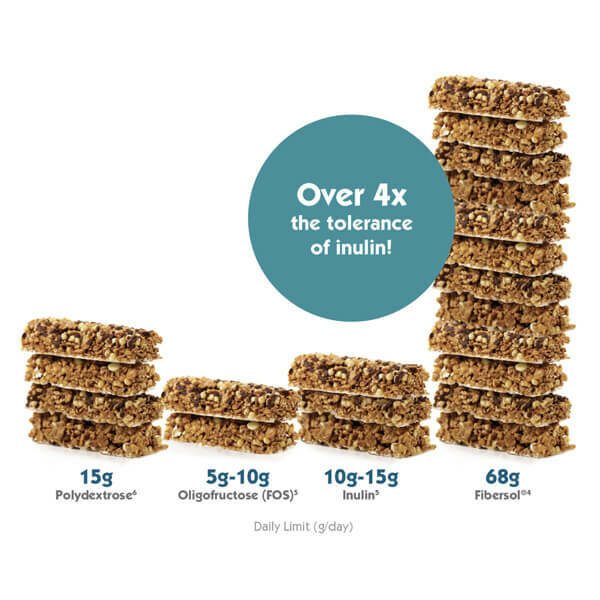FIBERSOL® IN THE BODY
What makes it different
Find out how Fibersol® works in the body—and how it stacks up to other dietary fiber ingredients, especially when it comes to digestive tolerance.

Header Banner. Learn More
FIBERSOL® IN THE BODY
Find out how Fibersol® works in the body—and how it stacks up to other dietary fiber ingredients, especially when it comes to digestive tolerance.


In the small intestine
Fibersol®
resists digestion during its short stop in the stomach and small intestine. The benefit? There’s virtually no increase in blood glucose when Fibersol® is consumed on its own.7
In the large intestine
Bacterial flora slowly and steadily ferments Fibersol® into short chain fatty acids (SCFAs) that promote the growth of gut-friendly microbes.
Result: less discomfort
SCFA production also lowers the colon’s pH—and the rate at which it drops indicates the degree of fermentation and off-gas.12 Since Fibersol®
ferments slower than fibers like FOS or inulin, it has a slower decrease of pH and less rapid off-gassing as shown in studies, which translates into less gastrointestinal discomfort.12

Well tolerated vs. inulin and other soluble fibers, Fibersol® delivers all the desired benefits of dietary fiber—with minimal digestive intolerance or gastric discomfort. This high level of tolerance makes Fibersol® an ideal alternative to inulin.

BETTER
Fibersol® prebiotic dietary fiber is a resistant maltodextrin associated with minimal gastrointestinal symptoms compared to inulin or FOS.
Over 30 years of extensive clinical research have proven Fibersol® to be well tolerated up to 68 grams per day.4

With its prebiotic soluble fiber and digestion-resistant characteristics, Fibersol® is a standout dietary fiber ingredient that delivers scientifically proven wellness benefits in these areas:

FORMULATIONS
Since it is heat-, acid-, shear- and freeze/thaw-stable, Fibersol® requires minimal formulation and process adjustments. Find out about Fibersol®’s formulation benefits—including high solubility, ease of handling and so much more.
Discover more about
4 Kishimoto, et al. “The Maximum Single Dose of Resistant Maltodextrin That Does Not Cause Diarrhea in Humans.” 2013. J Nutr Sci Vitaminol (Tokyo). 59(4):352-7. PMID: 24064737 DOI: 10.3177/jnsv.59.352.
5 AL Bonnema; et al. “Gastrointestinal Tolerance of Chicory Inulin Products.” 2010. Journal of the American Dietetic Association. June 2010; 110(6): 865-868. DOI: 10.1016/j.jada.2010.03.025
6 As codified by FDA.
7 K Okuma. 2002. J Appl. Clycosi. 49: 479-485.
12 EA Flickinger, et al. “Glucose-Based Oligosaccharides Exhibit Different In Vitro Fermentation Patterns and Affect In Vivo Apparent Nutrient Digestibility and Microbial Populations in Dogs.” 2000. J. Nutr. 130:1267-1273.